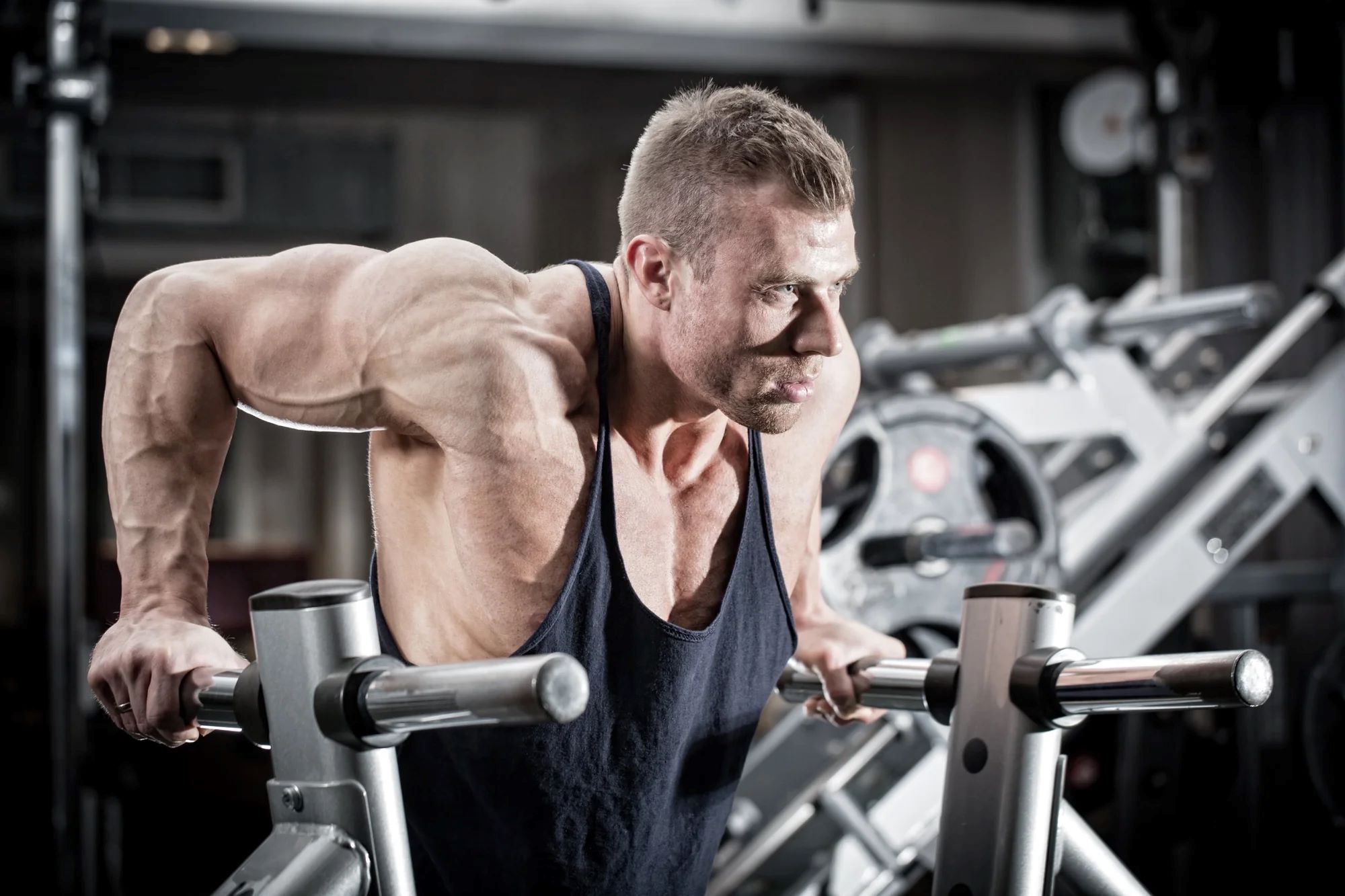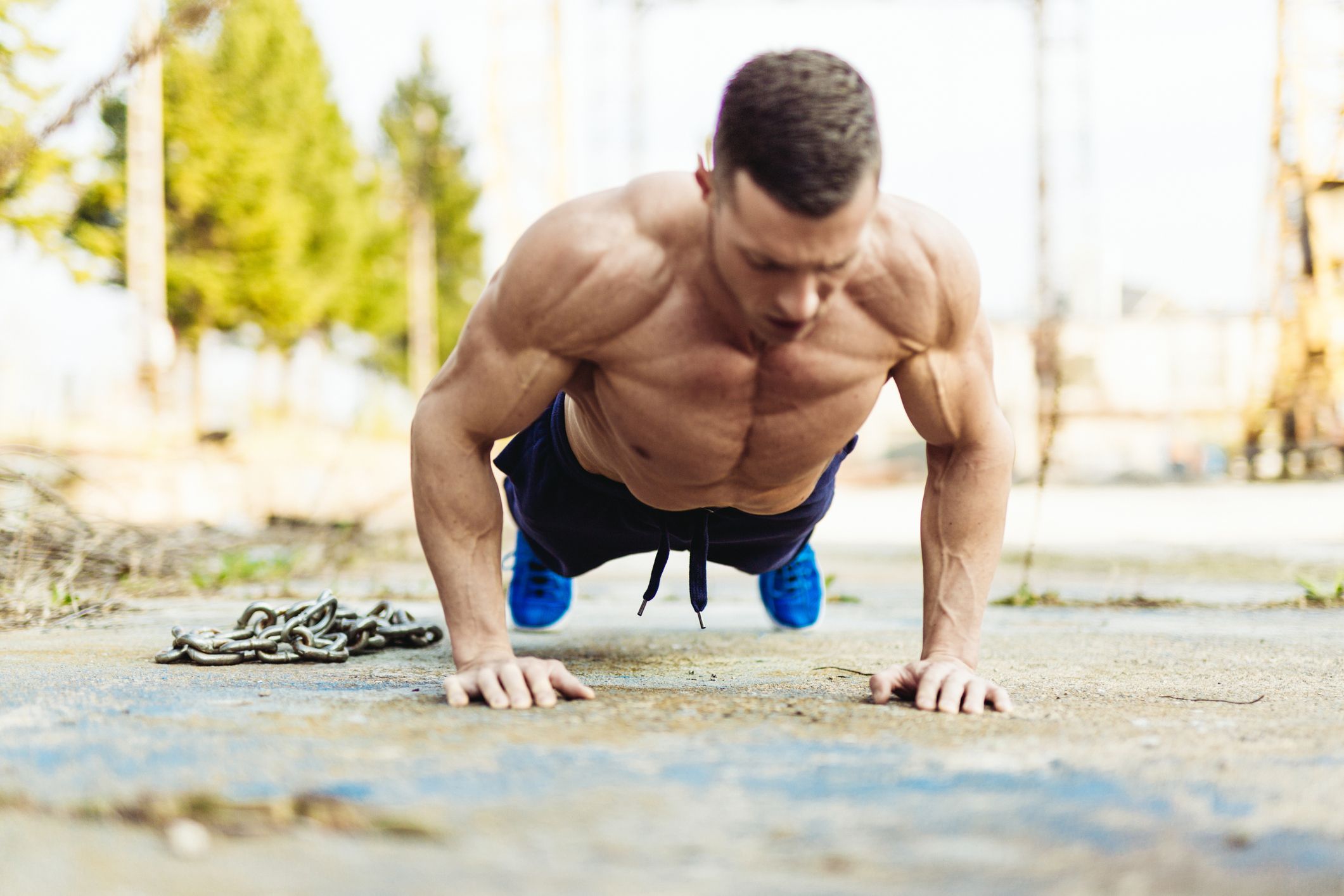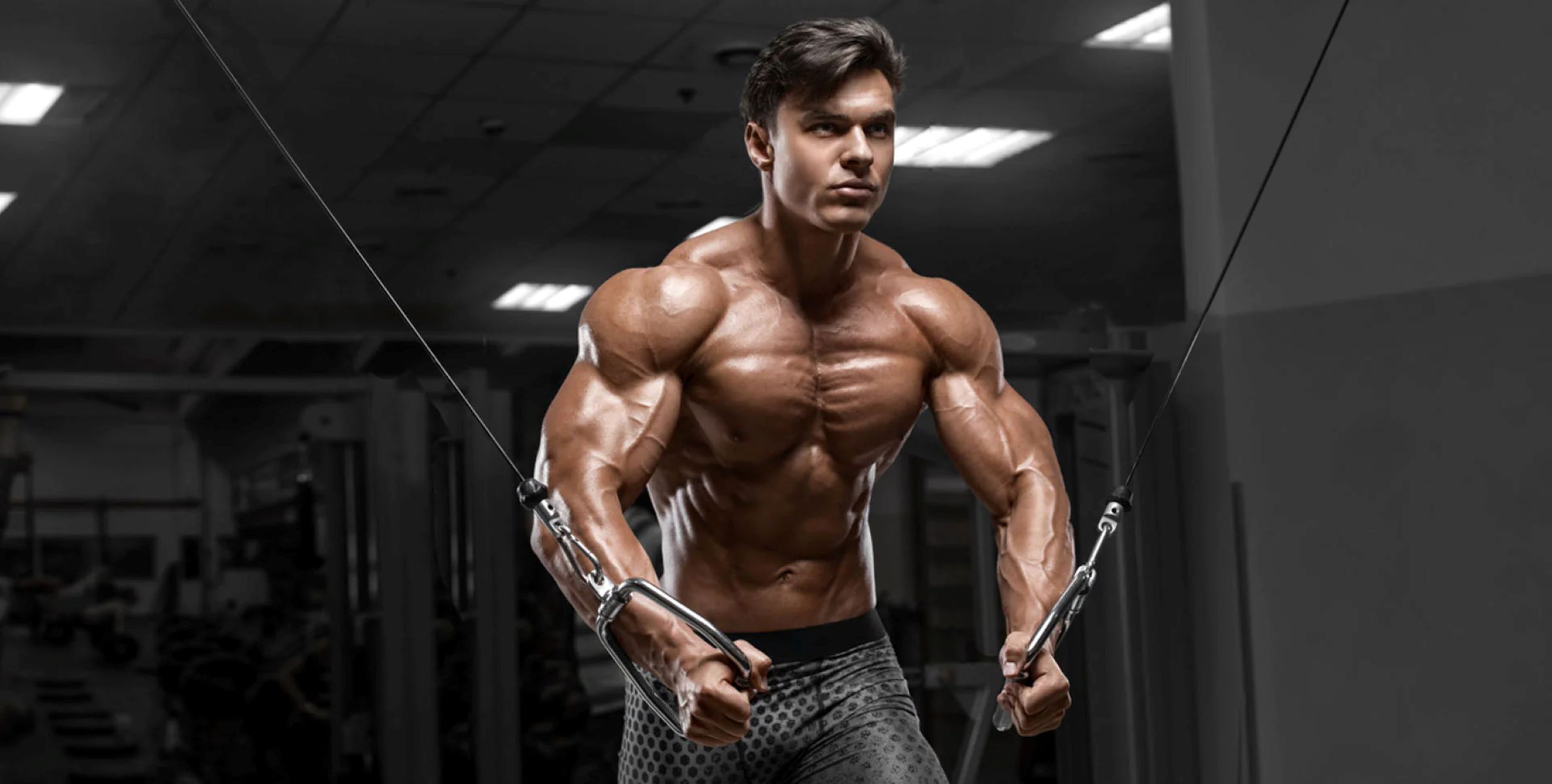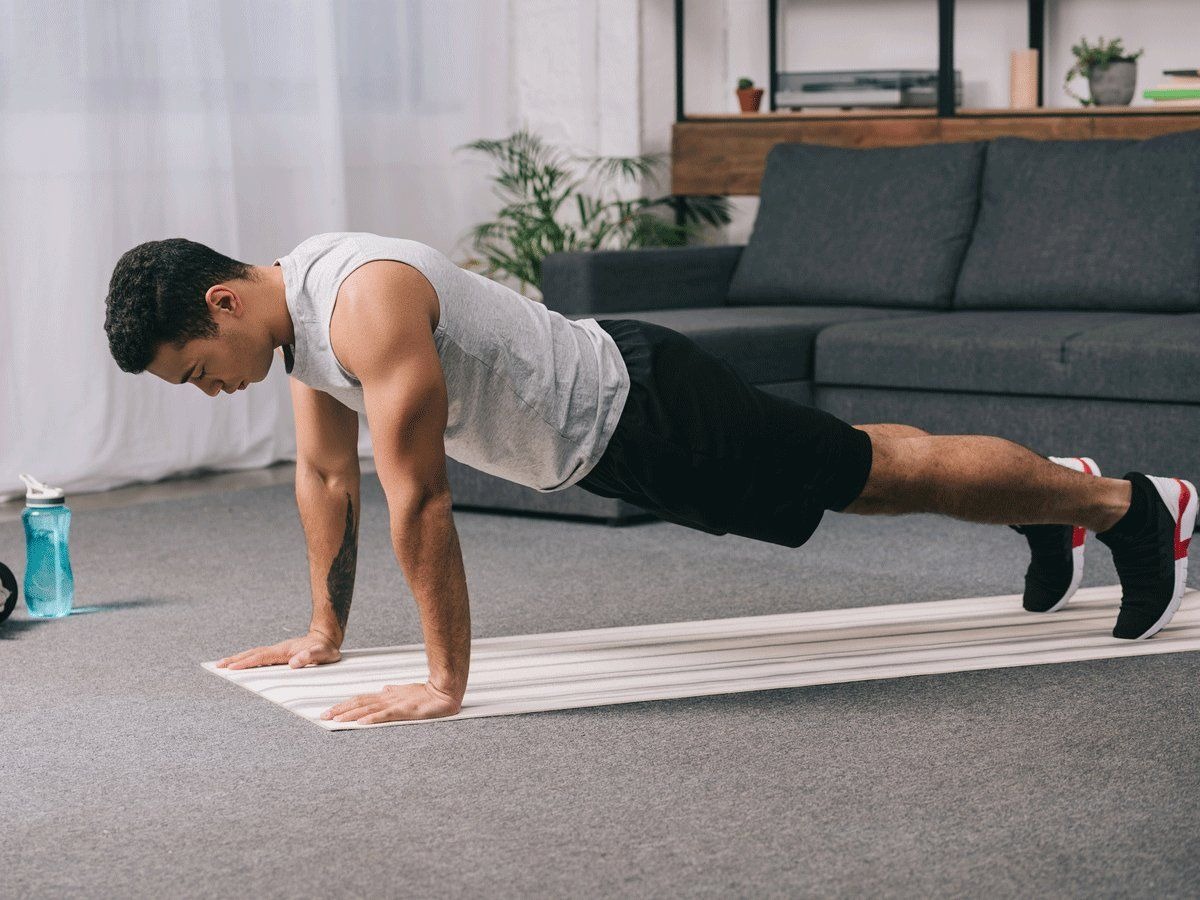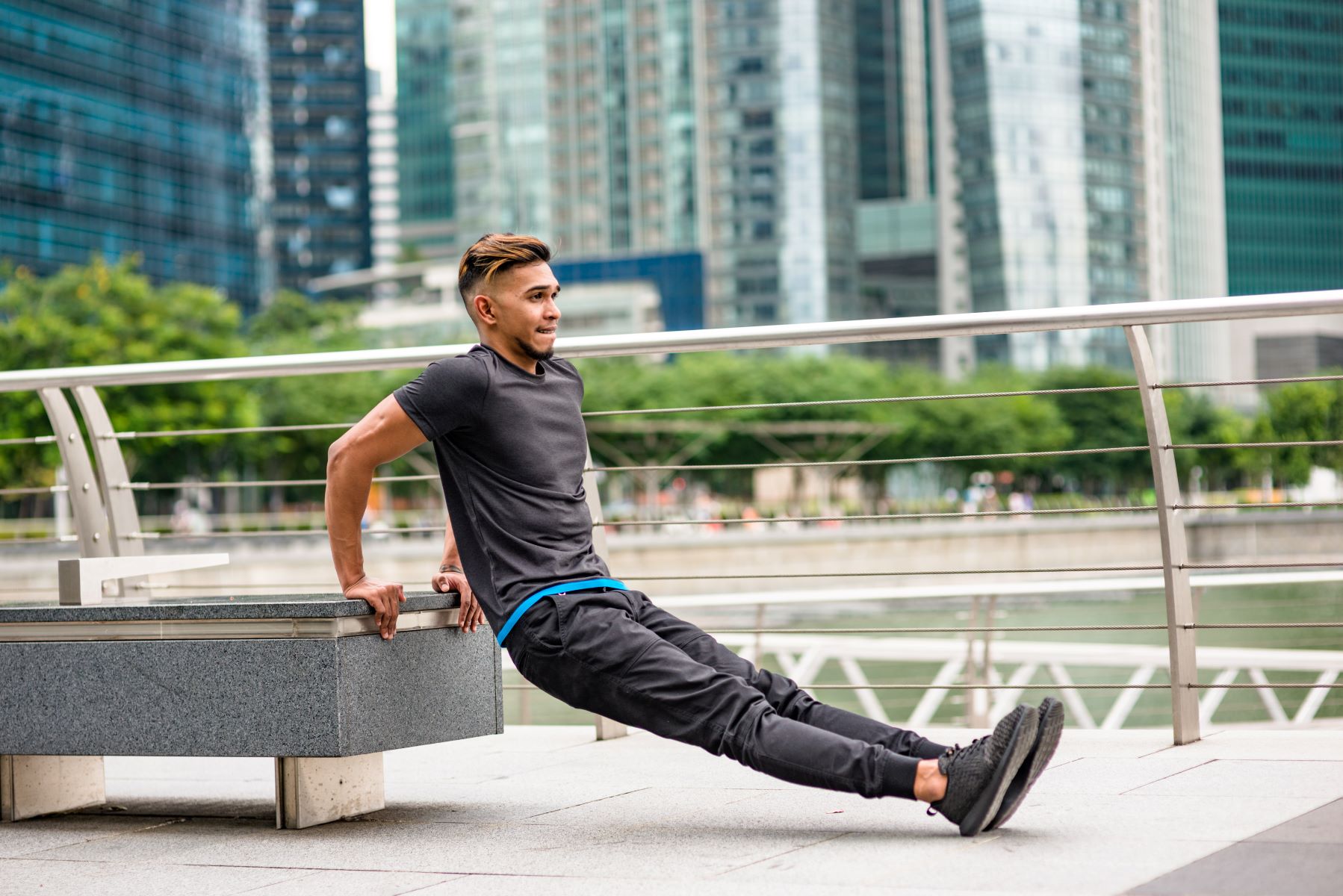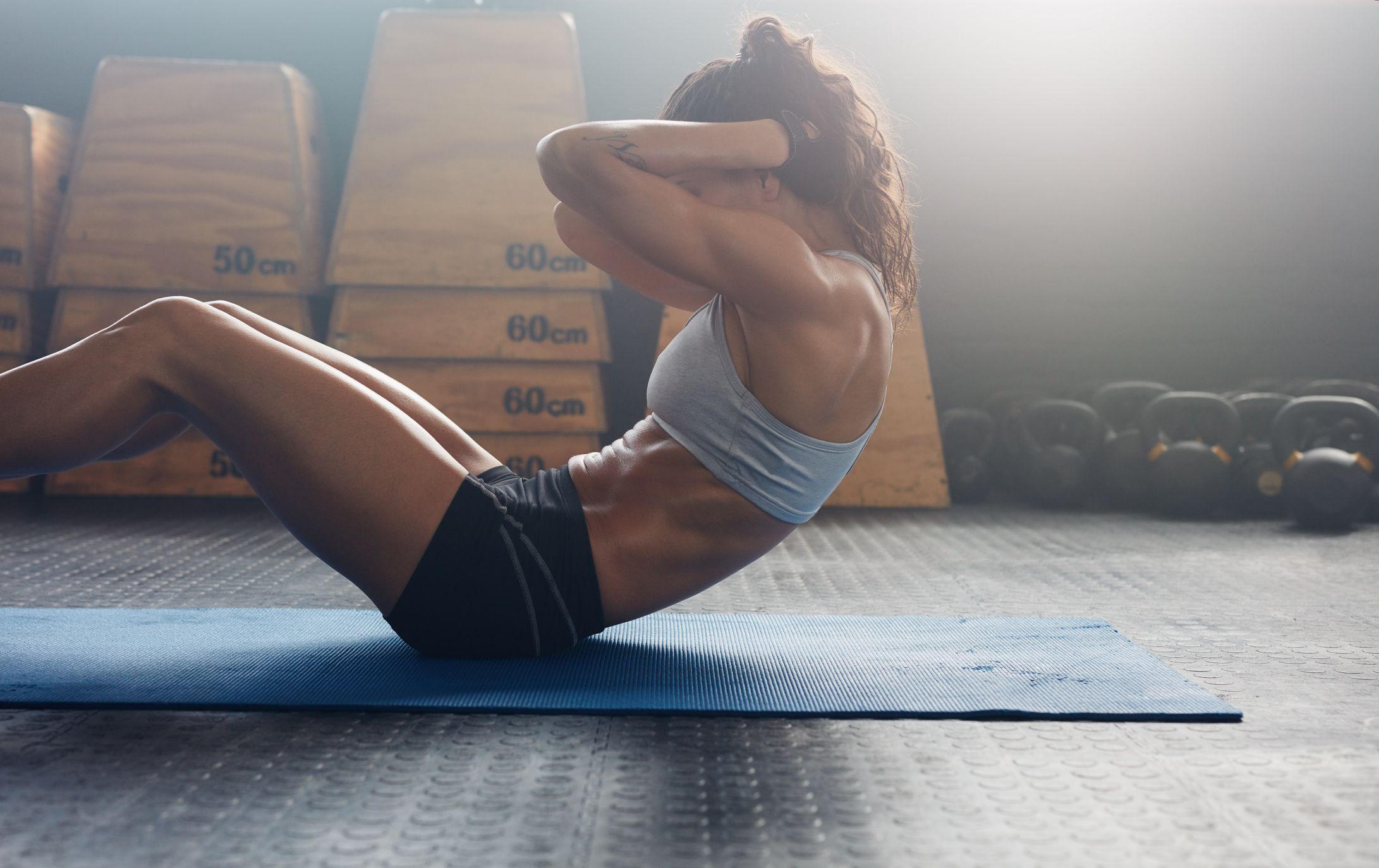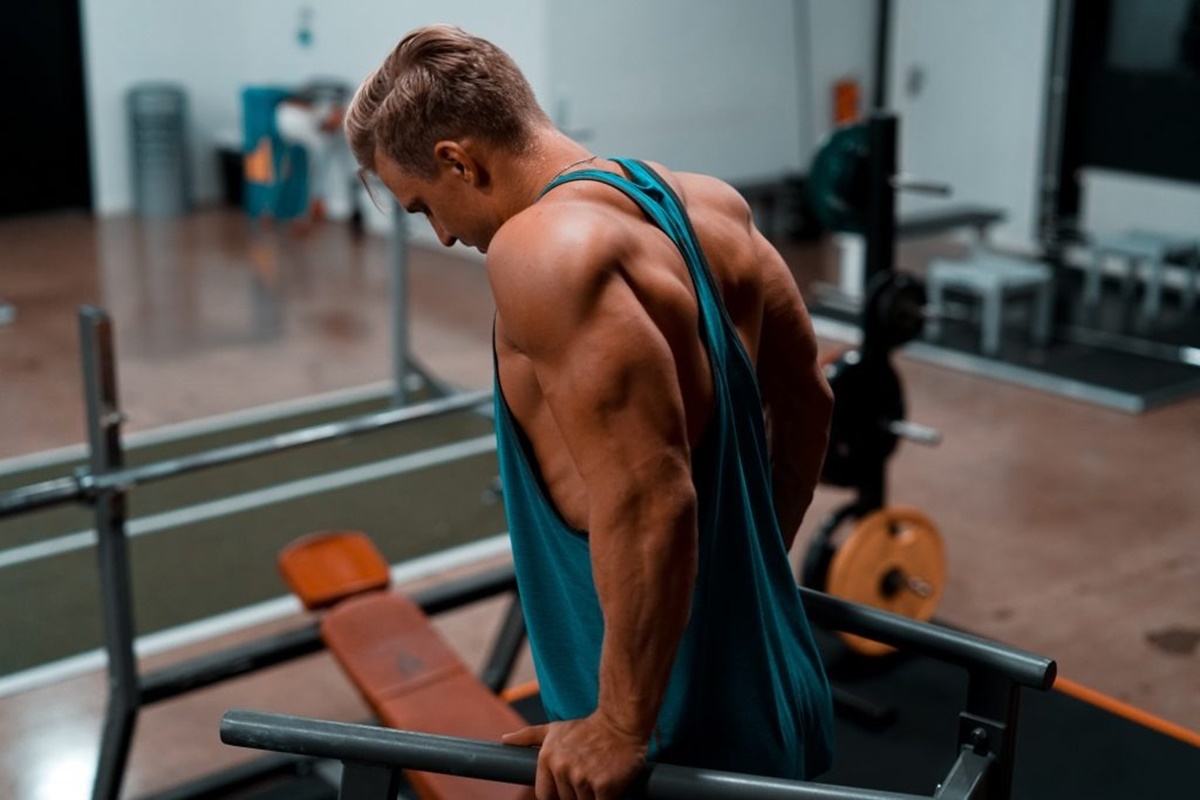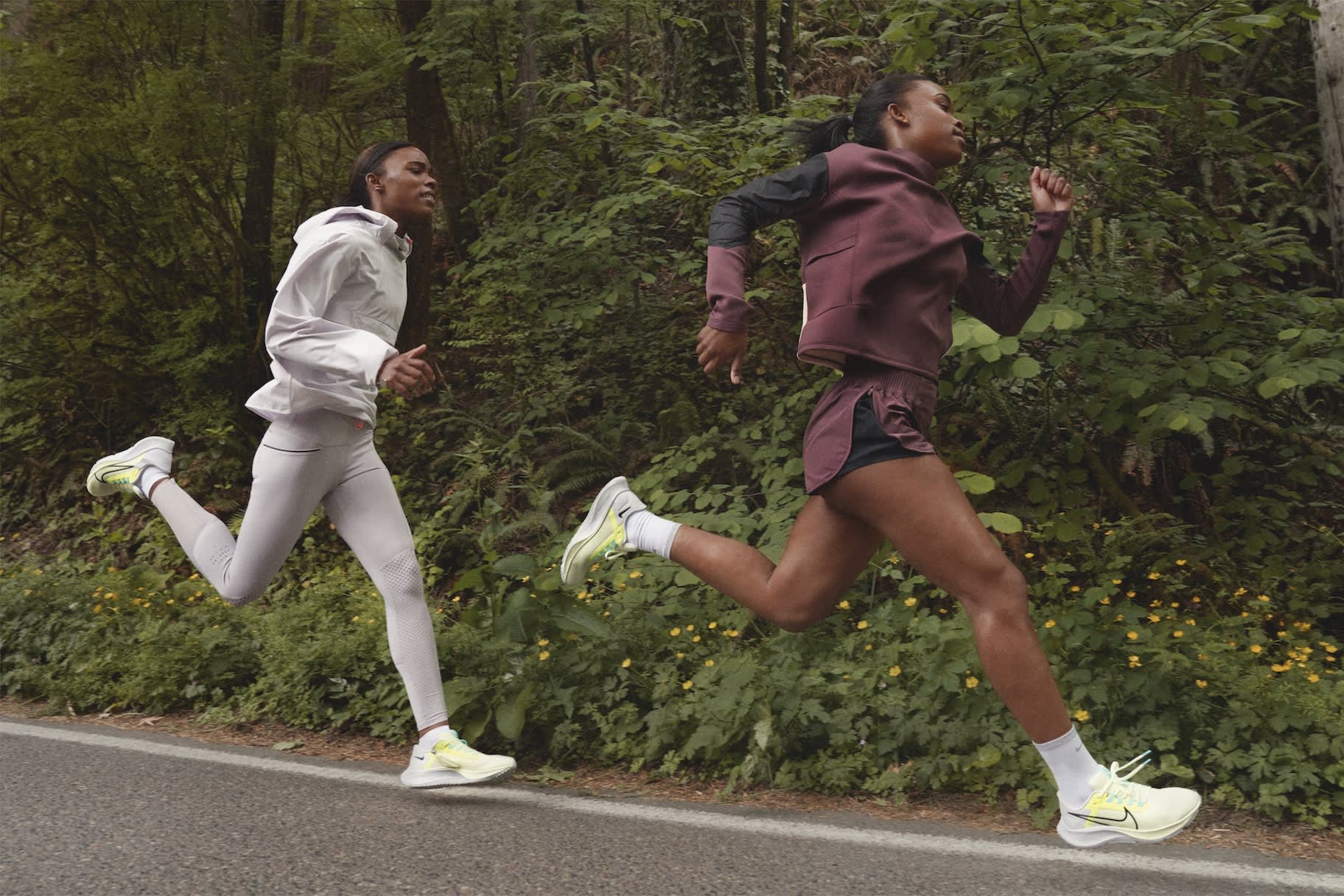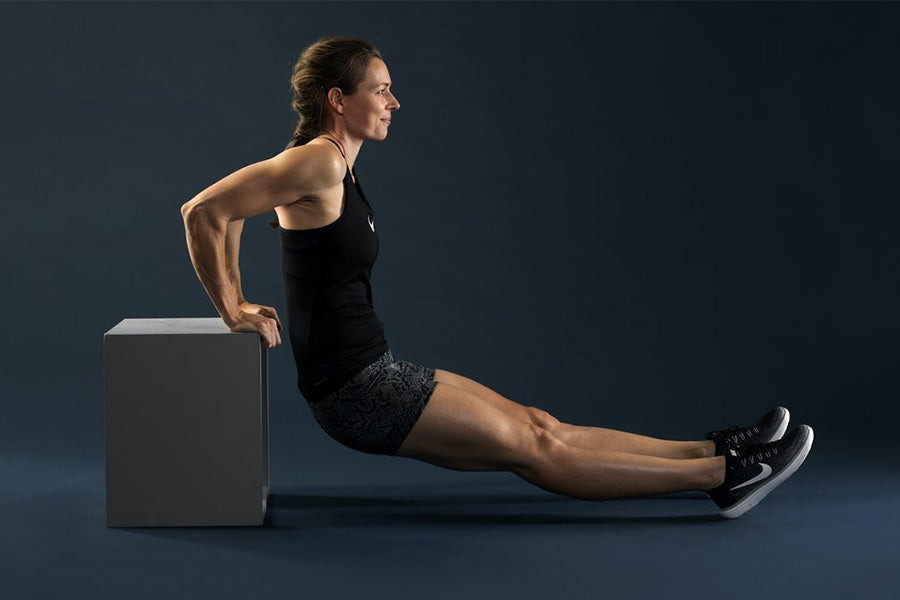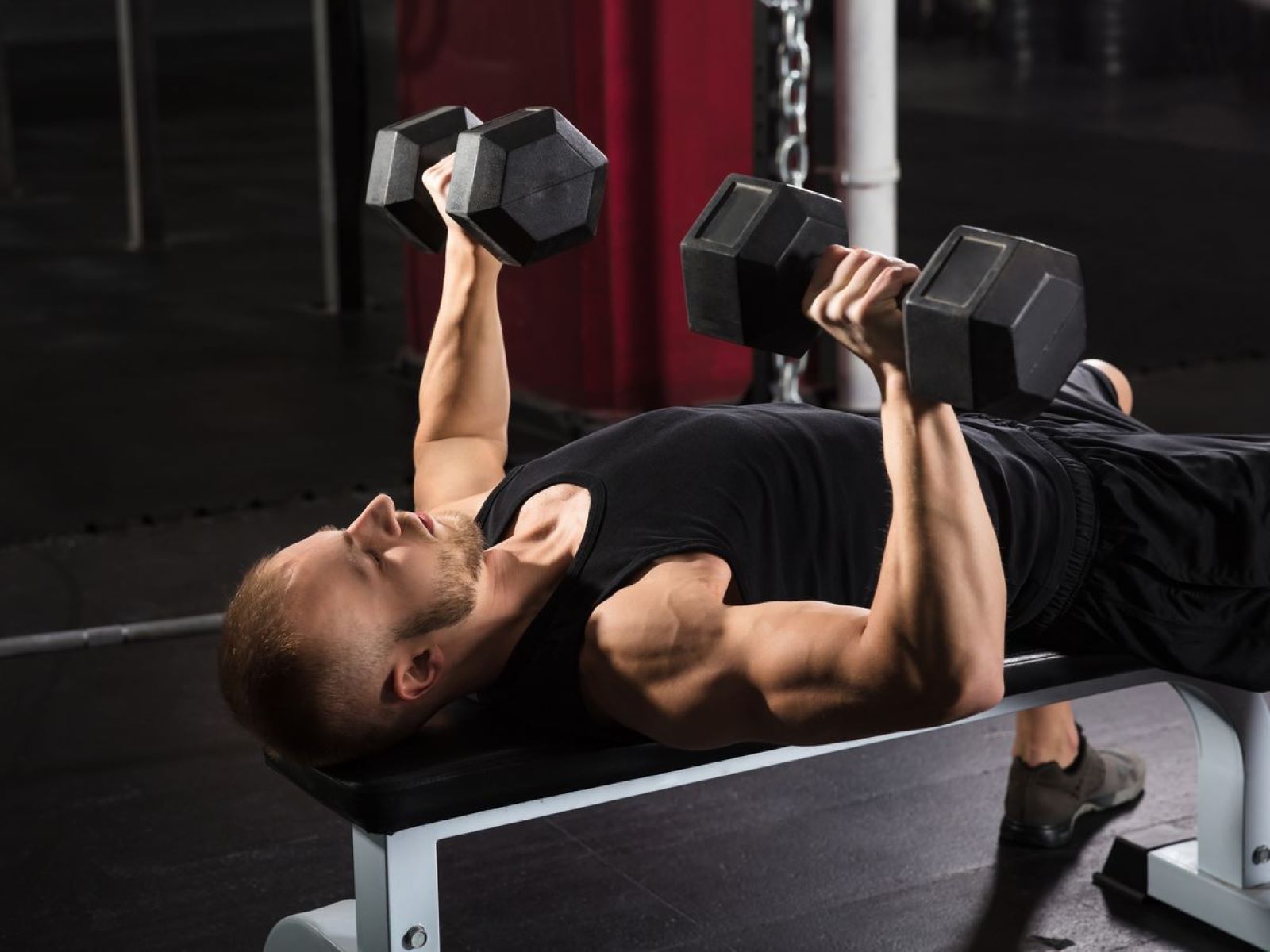

Featured
How To Workout Your Upper Chest
Modified: August 21, 2023
Discover the best exercises to target your upper chest and achieve a sculpted physique. Get featured with these effective workout tips and unleash your chest gains!
Introduction
When it comes to building a strong and well-defined chest, most people focus primarily on the middle and lower portions, neglecting their upper chest. However, targeting your upper chest is crucial for a well-balanced physique and enhanced overall strength. In this article, we will discuss the importance of working out your upper chest and provide you with some key exercises to incorporate into your routine.
The upper chest, also known as the clavicular pectoralis major, is located above the sternum and plays a significant role in shoulder stability and overall upper body strength. By neglecting this area, you may develop a muscular imbalance that can lead to poor posture, limited range of motion, and increased risk of injury.
Working out your upper chest offers numerous benefits. Firstly, it helps to create a more aesthetic appearance by providing a balanced and well-rounded chest. A developed upper chest adds fullness to the upper portion of your pectoral muscles, making your chest look wider and more defined. Secondly, targeting the upper chest can improve your overall upper body strength and performance. Strong upper chest muscles contribute to better stability during exercises that involve pushing movements, such as the bench press and overhead press. Lastly, developing your upper chest can help correct postural problems and promote better shoulder alignment.
Benefits of Working Out Your Upper Chest
Targeting your upper chest during workouts offers a wide range of benefits that go beyond simple aesthetics. Here are some key advantages of focusing on your upper chest muscles:
- Enhanced muscle symmetry: By working out your upper chest, you can create a more balanced and proportional look to your chest muscles. Many individuals tend to have a stronger and more developed lower chest due to exercises like regular bench presses. By targeting the upper chest, you can bring more symmetry to your overall chest development.
- Improved posture: Neglecting the upper chest can lead to poor posture and rounded shoulders. Strengthening the muscles in this area helps to counteract this imbalance and promote better spinal alignment. A stronger upper chest can also prevent the shoulders from hunching forward, contributing to a more upright and confident posture.
- Increased upper body strength: The upper chest plays a significant role in exercises that involve pushing movements, such as bench presses, shoulder presses, and dips. By focusing on your upper chest, you can improve your overall upper-body strength and enhance performance in these exercises. This can translate into increased power and efficiency in various functional activities and sports.
- Enhanced shoulder stability: Strengthening the upper chest muscles helps to stabilize the shoulder joint, reducing the risk of injuries during various movements and exercises. A strong upper chest provides a solid foundation for the shoulders, allowing for more controlled and stable movements, particularly during high-intensity exercises or overhead motions.
- Improved aesthetic appeal: Developing your upper chest adds fullness to the upper portion of your pectoral muscles, resulting in a more aesthetically pleasing and well-rounded chest. It creates a visual separation between the upper and lower chest, ultimately making your chest look wider, fuller, and more chiseled.
Incorporating exercises that target the upper chest into your workout routine can provide you with these benefits and help you achieve a well-rounded and strong upper body. Now, let’s explore the anatomy of the upper chest muscles to better understand how to effectively work them out.
Upper Chest Anatomy
To effectively train and develop your upper chest, it’s important to understand the anatomy of the muscles involved. The primary muscle targeted in this area is the clavicular head of the pectoralis major, also known as the upper chest muscle. This muscle originates from the collarbone (clavicle) and inserts into the upper part of the humerus bone in the arm. It is responsible for movements such as shoulder flexion and horizontal adduction.
The upper chest muscle is often overlooked compared to the larger and more dominant sternal head of the pectoralis major, which makes up the majority of the chest. However, by specifically targeting the upper chest, you can create more balanced chest development and a visually impressive physique.
To effectively engage and stimulate the upper chest, it’s crucial to focus on exercises that involve shoulder flexion and horizontal adduction. These movements require the arms to move upwards and across the body’s midline, targeting the clavicular head of the pectoralis major. Key exercises that effectively activate the upper chest muscle include incline bench press, incline dumbbell press, decline push-ups, cable crossovers, and dips.
Understanding the specific muscles involved and the movements they perform allows you to target and engage the upper chest effectively during your workouts. By incorporating exercises that isolate and stress the upper chest, you can develop its strength, size, and overall aesthetic appeal. In the next section, we will explore some key exercises to help you effectively work out your upper chest.
Key Upper Chest Exercises
To effectively target and develop your upper chest muscles, it’s important to incorporate exercises that focus on shoulder flexion and horizontal adduction. Here are some key exercises that can help you strengthen and sculpt your upper chest:
- Incline Bench Press: This exercise is performed on an incline bench set at an angle between 30-45 degrees. It specifically targets the upper chest while also engaging the shoulders and triceps. Use a barbell or dumbbells to perform the exercise, ensuring that you maintain proper form and control throughout the movement.
- Incline Dumbbell Press: Similar to the incline bench press, this exercise is performed with dumbbells. The advantage of using dumbbells is that they allow for a greater range of motion and provide equal resistance to both arms. It helps to activate the stabilizer muscles and isolate the upper chest effectively.
- Decline Push-Ups: Decline push-ups involve placing your feet on an elevated surface while performing a regular push-up. This variation places more emphasis on the upper chest, as the angle of the exercise targets the clavicular head of the pectoralis major. It is an effective bodyweight exercise that requires no equipment and can easily be done at home or in the gym.
- Cable Crossover: This exercise is performed using a cable machine or resistance bands. It involves crossing the cables in front of your body, mimicking a hugging motion. Adjust the height of the cables to target the upper chest effectively. The cable crossover provides constant tension throughout the movement, creating a great stimulus for muscle growth.
- Dips: Dips primarily target the chest, shoulders, and triceps. By leaning forward during the exercise, you can shift the focus to the upper chest. Dips can be performed using parallel bars or assisted with a dip machine. Ensure that you lower yourself with control and maintain proper form throughout the movement.
Incorporate a combination of these exercises into your workout routine to fully engage and develop your upper chest muscles. Remember to start with a weight or resistance level that challenges you but allows for proper form. As you progress, gradually increase the weight or resistance to continue stimulating muscle growth.
Now that you are familiar with the key exercises for the upper chest, let’s explore some tips for making your upper chest workouts more effective.
Incline Bench Press
The incline bench press is a classic exercise that targets the upper chest while also engaging the shoulders and triceps. It is performed on an inclined bench set at an angle between 30-45 degrees. Here’s how to perform the exercise correctly:
- Start by setting up the bench at the desired incline angle. Lie down on the bench with your feet firmly planted on the floor.
- Grip the barbell with an overhand grip slightly wider than shoulder-width apart. Make sure your wrists are straight and aligned with your forearms.
- Unrack the barbell and lower it slowly towards your upper chest, maintaining control and keeping your elbows slightly flared out.
- Pause for a brief moment when the bar touches your chest, then push the barbell back up to the starting position, fully extending your arms.
- Repeat for the desired number of repetitions.
To effectively target the upper chest, focus on squeezing your chest muscles as you push the barbell up. Keep your shoulder blades retracted throughout the movement to maintain stability and maximize muscle activation in the upper chest.
It’s important to use proper form and technique while performing the incline bench press to minimize the risk of injury and ensure optimal muscle engagement. Avoid arching your back excessively and limit the use of momentum to prevent strain on your lower back or shoulders.
Remember to start with a weight that allows you to perform the exercise with proper form and control. As you become more comfortable and stronger, you can gradually increase the weight to continue challenging your upper chest muscles.
The incline bench press is a fundamental exercise that should be included in any upper chest workout routine. It provides a great stimulus to the upper chest muscles, helping to develop strength, size, and definition. Incorporate this exercise into your routine and combine it with other upper chest exercises for a well-rounded approach to upper chest development.
Incline Dumbbell Press
The incline dumbbell press is a highly effective exercise for targeting the upper chest muscles. It offers several advantages over the traditional barbell bench press, as it allows for a greater range of motion and provides equal resistance to both arms. Here’s how to properly perform the incline dumbbell press:
- Set up an incline bench at an angle between 30-45 degrees. Sit back on the bench with a dumbbell in each hand, resting them on your thighs.
- Using your thighs as leverage, kick the dumbbells up to shoulder level. Ensure that your palms are facing forward, and your wrists are straight.
- Take a deep breath and squeeze your chest muscles as you press the dumbbells up, extending your arms fully. Keep your elbows slightly flared out during the movement.
- Pause for a brief moment at the top of the movement, focusing on contracting your upper chest muscles.
- Slowly lower the dumbbells back down towards your upper chest, keeping your elbows at a 45-degree angle.
- Repeat for the desired number of repetitions.
To maximize the activation of your upper chest, focus on squeezing your pectoral muscles as you press the dumbbells up. Maintain control throughout the movement and avoid using excessive momentum or swinging motions.
Incorporating the incline dumbbell press into your upper chest workout routine offers additional benefits over the barbell bench press. It helps to address any strength imbalances between your left and right sides, as each arm works independently. This can contribute to greater overall upper body strength and stability.
Start with a weight that challenges you but still allows for proper form and control. As you increase your strength, gradually progress to heavier weights to continue stimulating muscle growth and development in your upper chest.
The incline dumbbell press is a versatile exercise that can be modified by adjusting the incline bench angle, using different grip variations, or performing single-arm presses. Incorporating this exercise into your upper chest workout routine will help you achieve a well-rounded and balanced chest development.
Decline Push-Ups
Decline push-ups are a bodyweight exercise that targets the upper chest muscles in a unique way. By performing push-ups with your feet elevated on an elevated surface, you increase the level of difficulty and emphasize the clavicular head of the pectoralis major. Here’s how to correctly perform decline push-ups:
- Start by getting into a push-up position with your hands placed slightly wider than shoulder-width apart on the floor.
- Elevate your feet on a sturdy elevated surface, such as a bench or step. Your body should be in a decline position with your feet higher than your hands.
- Engage your core, keep your body in a straight line from head to toe, and lower yourself down towards the ground by bending your elbows.
- Push through your palms and extend your arms, raising your body back up to the starting position.
- Repeat for the desired number of repetitions.
During a decline push-up, the angle of your body places more stress on the upper chest muscles, making it an effective exercise for targeting this area. Keep your elbows slightly flared out to engage the upper chest muscles more directly.
If you are new to decline push-ups or find them too challenging initially, you can start by using a lower surface to elevate your feet. As you become stronger, gradually increase the height of the surface to intensify the exercise.
Decline push-ups offer several benefits beyond upper chest development. They also engage the shoulders, triceps, and core muscles, making it a compound exercise that targets multiple muscle groups simultaneously. Additionally, this exercise can help improve shoulder stability and strengthen the muscles that support proper posture.
Incorporate decline push-ups into your upper chest workout routine as part of your bodyweight exercises or in combination with other weighted exercises. They offer a convenient and efficient way to target your upper chest without the need for any equipment. Aim to maintain proper form and control throughout the movement to maximize the effectiveness of the exercise.
Cable Crossover
The cable crossover exercise is a fantastic option for targeting the upper chest muscles and creating a deep, sculpted look. It provides constant tension throughout the movement, ensuring maximum muscle activation and growth. Here’s how to perform the cable crossover exercise correctly:
- Stand in the middle of a cable machine, with the cables set at a high position on each side.
- Grasp the handles with an overhand grip, palms facing down, and take a step forward to create tension in the cables.
- With a slight bend in your elbows, bring your arms forward and down in a hugging motion, crossing the cables in front of your body.
- Squeeze your chest muscles at the center of the movement, then slowly release and return to the starting position.
- Repeat for the desired number of repetitions.
To effectively target the upper chest, focus on keeping your arms slightly angled downward throughout the movement. This emphasizes the clavicular head of the pectoralis major and promotes optimal muscle engagement. Make sure to maintain proper form and control, avoiding any excessive swinging or jerking motions.
The cable crossover exercise offers various benefits for developing the upper chest muscles. It allows for a broader range of motion and provides constant resistance throughout the movement, ensuring consistent tension on the targeted muscles. Additionally, the exercise engages the stabilizer muscles, promoting better overall muscle balance and coordination.
To increase the intensity of the exercise, you can adjust the height of the cables or change the angle of your body slightly. You can also experiment with different grip variations, such as an underhand grip or a wide grip, to target the upper chest from different angles.
Incorporate the cable crossover exercise into your upper chest workout routine as an effective isolation exercise. It can be performed at the beginning or end of your workout, and you can combine it with other compound exercises for a well-rounded upper chest workout. Remember to choose a weight that challenges you but still allows for proper form and control.
By including the cable crossover exercise in your training, you can effectively target and develop your upper chest muscles, enhancing the overall appearance and strength of your upper body.
Dips
Dips are a highly effective compound exercise that targets not only the chest but also the shoulders and triceps. By leaning forward during the movement, you can shift the focus onto the upper chest. Dips can be performed using parallel bars or assisted with a dip machine. Here’s how to correctly perform dips:
- Begin by gripping the parallel bars or holding onto the handles of a dip machine.
- Position yourself with your arms fully extended and your body suspended in the air.
- Lower your body by bending your elbows and leaning forward, allowing your chest to dip below your elbows.
- Push through your palms and extend your arms, raising your body back up to the starting position. Keep your chest lifted throughout the movement to engage the upper chest.
- Repeat for the desired number of repetitions.
To fully engage the upper chest, emphasize the full range of motion by lowering your body until your upper arms are parallel to the floor or slightly below. This deep dip position enables a greater stretch on the chest muscles, promoting optimal muscle activation and growth.
Dips allow for progressive overload by adding weight using a dip belt or by using assisted dip machines. As you become stronger, gradually increase the resistance to continue challenging your upper chest muscles and promoting further development.
In addition to targeting the upper chest, dips also engage the shoulders and triceps, making it a highly effective compound exercise. They can help improve overall upper body strength, stability, and muscular endurance.
It’s important to maintain proper form while performing dips to avoid strain or injury. Keep your core engaged, and focus on controlling the movement throughout. If you’re new to dips, you can start with assisted variations or use resistance bands to support your body weight until you build enough strength to perform unassisted dips.
Incorporate dips into your upper chest workout routine to effectively target and develop your upper chest muscles. Combine them with other exercises like bench presses and incline variations for a comprehensive and well-rounded upper chest workout.
Remember to listen to your body and adjust the intensity and difficulty of the exercise according to your fitness level. With consistent practice and progressive overload, dips can help you achieve a strong, sculpted upper chest and enhance your overall upper body strength.
Tips for Effective Upper Chest Workouts
To maximize your upper chest development and achieve optimal results from your workouts, consider the following tips:
- Vary the exercises: Include a variety of exercises in your upper chest workouts to target the muscles from different angles and stimulate growth. This will help prevent plateaus and promote overall muscle balance.
- Focus on mind-muscle connection: Concentrate on contracting and squeezing your upper chest muscles during each exercise. This mind-muscle connection can enhance muscle activation and ensure that you’re effectively targeting the intended muscle group.
- Progressive overload: Continually challenge your upper chest muscles by progressively increasing the resistance, weight, or intensity of your exercises. This constant progression will stimulate muscle growth and prevent stagnation.
- Proper form and technique: Always prioritize proper form and technique during your workouts. It not only helps prevent injuries but also promotes optimal muscle engagement and development.
- Warm up effectively: Before starting your upper chest workouts, make sure to warm up adequately to prepare your muscles for the upcoming exercises. A dynamic warm-up that includes arm circles, shoulder stretches, and light chest presses can help increase blood flow and prevent injuries.
- Include compound movements: Compound exercises like bench presses and dips are essential for overall chest development. Make sure to include these exercises in your routine as they engage multiple muscle groups and contribute to greater overall strength.
- Don’t neglect other chest muscles: While focusing on your upper chest is important, remember to also work the middle and lower chest muscles to achieve a well-rounded and balanced chest development.
- Rest and recover: Allow your upper chest muscles to recover adequately between workouts. Aim for 48 hours of rest before targeting them again. This rest period promotes muscle repair and growth.
- Ensure a balanced program: Combine your upper chest workouts with exercises for other muscle groups to achieve a well-balanced and proportioned physique. Consider working with a trainer or fitness professional to design a comprehensive program.
- Stay consistent: Consistency is key to achieving results. Make sure to stick to your upper chest workout routine and maintain a regular exercise schedule to see progress over time.
By incorporating these tips into your upper chest workouts, you’ll optimize your training and achieve better upper chest development. Remember, everyone’s body is unique, so it’s important to listen to your own body and modify the exercises and intensity to suit your individual fitness level and goals.
Conclusion
Working out your upper chest is crucial for achieving a balanced and well-defined chest, as well as improving overall upper body strength and stability. By targeting the upper chest muscles, you can enhance your posture, create a more aesthetic look, and increase your overall upper body strength and performance.
In this article, we discussed the benefits of working out the upper chest, including enhanced muscle symmetry, improved posture, increased upper body strength, enhanced shoulder stability, and improved aesthetic appeal. We also explored the anatomy of the upper chest muscles and provided key exercises to effectively target this area.
The incline bench press, incline dumbbell press, decline push-ups, cable crossovers, and dips are all excellent exercises that activate and develop the upper chest muscles. By incorporating these exercises into your workout routine, you can effectively strengthen and sculpt your upper chest.
To achieve the best results from your upper chest workouts, it’s important to vary your exercises, focus on mind-muscle connection, practice proper form and technique, warm up effectively, include compound movements, and allow for proper rest and recovery.
Remember, consistency is essential. Stick to a regular workout routine, gradually increase the intensity and resistance over time, and maintain a well-balanced program that targets all aspects of your chest muscles.
By following these tips and incorporating upper chest exercises into your routine, you can achieve a well-defined and impressive upper chest, contributing to a stronger, fitter, and more aesthetically pleasing physique.
So, what are you waiting for? Start incorporating these exercises and tips into your upper chest workouts and watch as your upper chest muscles grow and develop, helping you achieve the strong, sculpted, and balanced chest you desire.
